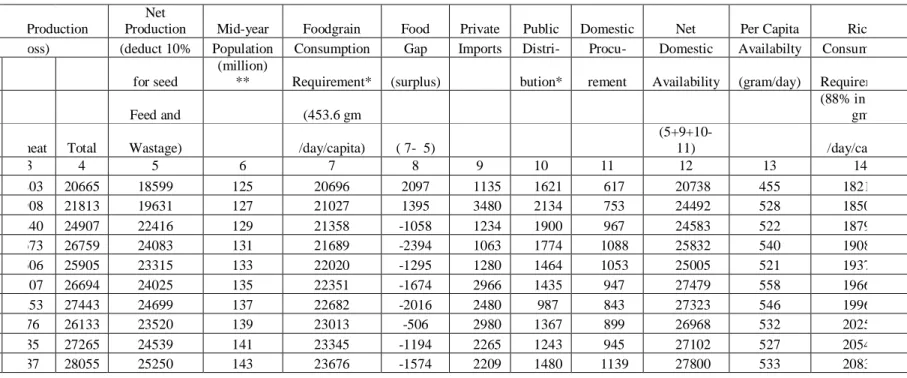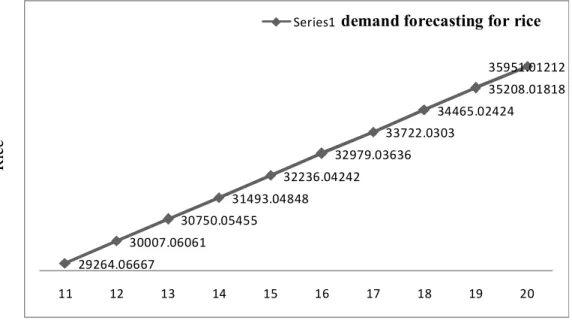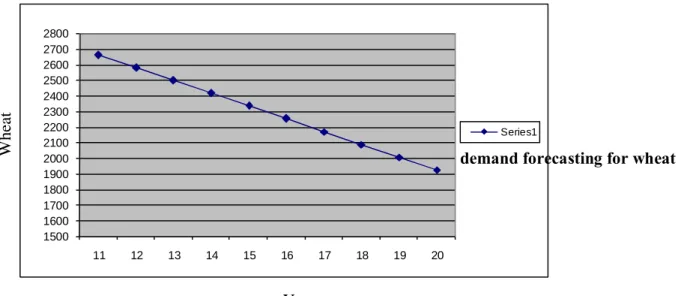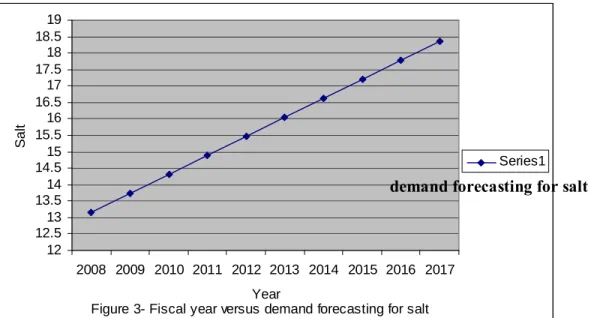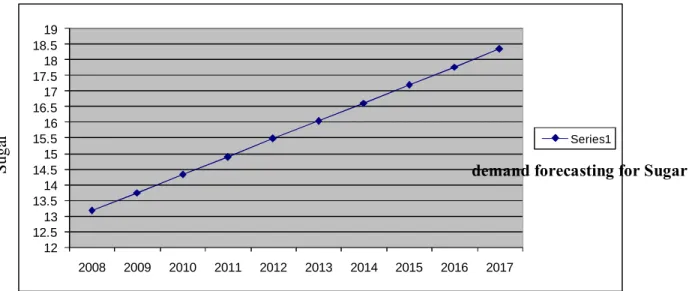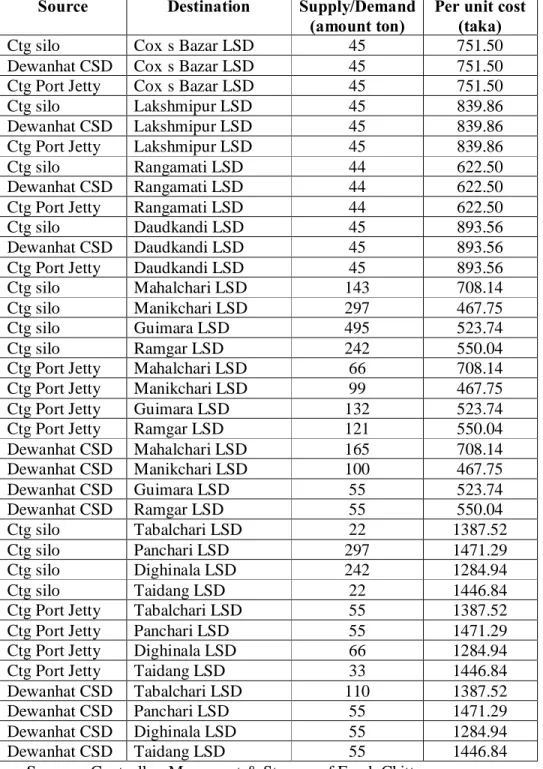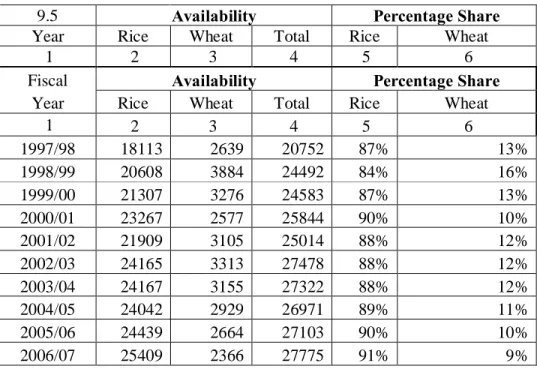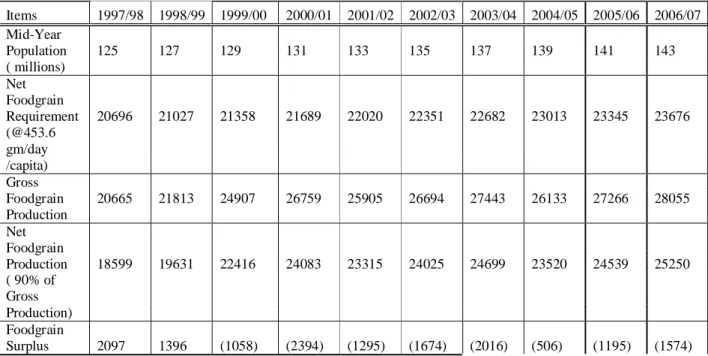The dissertation titled “Optimization in Food Grain Distribution System: Case of Directorate General of Food” Submitted by Md. Tajal Islam, Roll No P), session April' 2005, was accepted as satisfactory in partial fulfillment of the requirement for the degree of Master of Industrial and Production Engineering on 5 December 2010. It is hereby declared that this project or any part thereof not been submitted elsewhere for the award of any degree of diploma.
This proposed 10-year demand assessment (wheat, rice, sugar and salt) and optimized food distribution network will be considered as part of the existing food distribution network. Ahsan Akhtar Hasin, Professor, Department of Industrial and Manufacturing Engineering, for his valuable guidance, excellent advice, constant encouragement and supervision throughout the work.
LIST OF ABBREVIATIONS
CHAPTER –I
INTRODUCTION
- INTRODUCTION
- BACKGROUND OF THE STUDY
- OBJECTIVE OF THE STUDY
- METHODOLOGY
- SCOPE AND LIMITATION
Almost 40% of the population lives below the poverty line based on food consumption, without sufficient resources to meet a diet of 2,122 kilocalories (kcal) per person per day, along with other basic needs. The purpose of this paper is to design an optimal food distribution system to assess trends in factors affecting food production, food availability and their impact on nutrition outcomes. The paper also assesses the government's food security strategies and policies and safety nets for addressing food insecurity and vulnerability to price and production volatility.
Food is a basic human need and plays a crucial role in the agro-economy of Bangladesh, where a large part of the population is dependent on food. The first and foremost responsibility of the Directorate General for Food is to ensure an uninterrupted food supply for all people at all times. According to Article 15(a) of the Constitution of Bangladesh, it is a fundamental responsibility of the state to ensure the provision of basic food needs to its citizens.
According to the government's allocation of companies, it is the duty of the Ministry of Food and Disaster Management to establish a reliable food security system for the country. The outcomes of this study are (a) estimation of demand for selected food grains, (b) optimization of food distribution network of Directorate General of Food to minimize transportation costs.
CHAPTER –II
FOODGRAIN PRODUCTION AND AVAILABILITY
- DOMESTIC FOODGRAIN PRODUCTION
- TREND IN DOMESTIC PRODUCTION OF FOOD
- TREND IN IMPORTS OF FOOD
- SAFETY NETS
Rice production growth followed population growth in the 1980s and greatly outpaced population growth in the 1990s. Wheat is grown mainly in the northwestern part of the country, where the winter is relatively longer. The availability of high-yielding modern varieties in the late 1960s, however, encouraged farmers to grow more wheat.
In the context of food security, an important point to note is that grain production has become more resilient to natural disasters over time due to the dramatic change in the seasonal composition of production. This change in the seasonal composition of production also had a softening effect on the seasonal and 1998 figures. The long-term trend in the import of important food products is shown in Table 9.
Despite the favorable trend in domestic production over the past three decades, Bangladesh is still not self-sufficient in cereals. Increased domestic production and increased government capacity to import food grains commercially have resulted in the downward trend of food aid in recent years.
CHAPTER - III
FOODGRAIN STORAGE MANAGEMENT SYSTEM
FOODGRAIN STORAGE MANAGEMENT
A BRIEF DESCRIPTION OF FOOD GRAIN STORAGE SYSTEM IN BANGLADESH
Public food grain storage system includes local supply depots 'LSD' (in rural and urban areas), central storage depots 'CSD' (at regional level) and bulk silos (at port and national level). Islam (1980) discussed procurement of food grains, input subsidies and the public food distribution system in Bangladesh. The salient features of the policy package are the government's purchase of food grains at fixed prices during the harvest season, subsidies for important raw materials such as irrigation and fertilizers, and distribution of food grains to consumers at a price lower than the market. prices.
They also asserted that it is desirable to build up a substantial reserve of food grain both through local procurement and importation in order to avoid extremely large fluctuations in the price of rice due to fluctuations in rice production. Berlage (1973) developed a dynamic programming model to design food grain import and storage policy in Bangladesh. The model was developed to be used as an on-line tool for government decisions regarding price, stock, storage and trade of wheat, Shahabuddin (1987) developed an econometric model of the public food grain distribution system in Bangladesh.
He also examined the effect of ration price, ration quota and share of rece in the total ration distribution on the market price of race and consumption of food grains. Bala et al (1990) developed a system dynamics model for procurement, release and import of food grains in Bangladesh.
PRESENT PUBLIC FOOD GRAIN STORAGE CAPACITY
He analyzed the impact of different production scenarios on the market price, ration reduction, internal purchasing, imports and total consumption.
CHAPTER – IV
OPTIMAL STOCK FOR PUBLIC FOODGRAIN DISTRIBUTION SYSTEM
OPTIMAL FOOD STOCK
The food grain sector in Bangladesh is characterized by the active presence of the public sector, which is involved in various operations related to domestic procurement, public distribution, import and open market. The main issue in connection with public stocks is the need to understand the political principles that form the basis of stock policy. The overarching concern of food grain storage policy is to guarantee food security at minimum cost.
Until as recently as 1988, the general guidelines for stock policy in Bangladesh followed the recommendations of the World Bank expressed in an influential report (World Bank 1979). That report suggested that the total food grain stock was 1.5 million tons per year. every year and 1.2 million tons per November 1st. As pointed out by Chowdhury (1990), the World Bank's recommendation of a fixed stock on 1 July each year misses the point that the multiple cropping pattern of Bangladeshi rice cultivation allows production declines occurring in one cropping season to be compensated for within the same year. The World Bank's recommendations in 1979 appear to be overly cautionary, understandably so in light of the severe drought experienced in Bangladesh that year.
However, in the years after 1981, government stocks rarely exceeded 1.2 million tons. Taking population growth into account, per capita stock levels have been much lower than those recommended by the World Bank in 1979.
OPTIMAL FOOD STOCK PROBLEM
COMPONENTS OF FOOD STOCK POLICY
CHAPTER - V
PROCUREMENT AND IMPORT
DOMESTIC PROCUREMENT
CONTEXT OF PROCUREMENT
IMPORT
CHAPTER -VI
PUBLIC FOODGRAIN DISTRIBUTION SYSTEM IN BANGLADESH
- PUBLIC FOODGRAIN DISTRIBUTION
- REVIEW OF GOB FOOD POLICY
- FROM EMERGENCY RELIEF TO POVERTY ALLEVIATION AND DEVELOPEMENT
- OBJECTIVES PFDS
- DISTIRBUTION OF FOODGRAINS THROUGH THE PFDS Two major channels
- TARGETED FOOD PROGRAMS
GOB is responsible for providing the necessary quantities of the raw materials at the local level for the programs. They provide payment for half of the estimated cost (in 1994 it was estimated to be $46 per ton). 1989 when the SIFAD task force was tasked with conducting a full review of food aided development programmes.
One of the recommendations of the SIFAD task force was to improve the institutional arrangements for the flow of food aid. Initially, food aid programs were intended as aid programs and intended to help the poorest part of the population. Ultimately, increasing household food security requires raising the incomes of the poor and reducing poverty levels.
In addition to the development of rural infrastructure projects, they must also develop the human capital of the participants. PFDS is an important element of Bangladesh's food economy, purportedly designed to improve access to and consumption of food grains by various target groups. A targeted short-term income transfer intervention is considered an effective way to increase the real income of the poor to improve their access to food.
The government has intervened in two major ways to alleviate the nutritional stress of the poor: (i) through price subsidies on food grains and (ii) targeted income transfers. With the exception of the six SR areas, the PR program was active throughout the country and covered approximately 6 percent of the non-SR population according to the 1991 census. The author thus concludes that the PR program produced only meager convergence of the needy relative to the number of poor people who continue to live in extreme poverty.
Furthermore, the program's effects on increasing an eligible beneficiary's real income were insignificant. In fact, the authors of the BECON study were able to demonstrate that overall, PFDS contributed effectively to overall food security. The evidence in Tables 5.1 and 5.2 suggests that both the FFW and VGD programs reach the poorest.
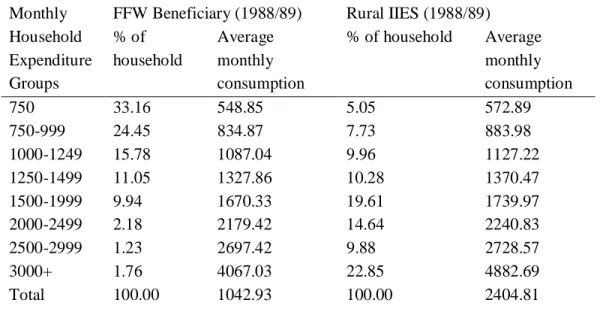
CHAPTER – VII
DEMAND ESTIMATION OF FOOD GRAIN
ESTIMATES OF FOOD SUPPLY
ESTIMATES OF FOOD DEMAND
However, it is time consuming, inefficient and subject to bias; and it is important to introduce a more scientific method of calculating total production figures for food grains. The FPMU uses a projected population based on the assumption that the replacement rate will be reached by 2011. The issue requires further analysis as the population estimates used by the FPMU appear to contain a downward bias.
An official population projection must be adopted; and it is probably more realistic to use population projections on the increase that would be achieved in 2016. When estimating food demand, the implications of the age structure of the population must also be taken into account.
FORECASTING WITH LINEAR REGRESSION METHOD
CHAPTER – VIII
OPTIMIZATION OF FOOD DISTRIBUTION SYSTEM
TRANSPORTATION METHOD
TRANSPORTATION ALGORITHM The Transportation Algorithm
TRANSPORTATION RULES
- NORTHWEST CORNER RULE
- LEAST COST METHOD OR MATRIX MINIMA METHOD
CHAPTER –IX
CONCLUSIONS AND RECOMMENDATIONS
CONCULSIONS
RECOMMENDATIONS
Database on Food Situation Food Planning and Monitoring Unit (FPMU), Ministry of Food and Disaster Management, GoB, 2009. Goletti Francesco, Ahmed Raisuddin and Chowdhury Nuimuddin, “Optimal Stock For the Public Foodgrain Distribution System in Bangladesh”, International Food Policy Research Institute. Food Market Price, Stocks and Public Food Distribution System, Food Planning and Monitoring Unit (FPMU) Ministry of Food.
